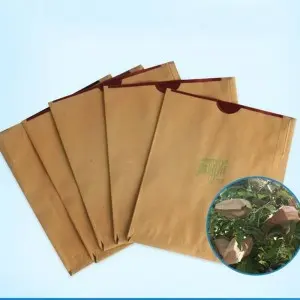Հլս . 27, 2024 11:19 Back to list
Techniques for Gathering Pollen from Pear Trees for Enhanced Fruit Production and Breeding
Methods of Collecting Pear Pollen A Comprehensive Overview
Pollination plays a pivotal role in the reproductive cycle of pear trees, directly influencing fruit yield and quality. Collecting pear pollen effectively is essential for both commercial orchards and research purposes. This article explores several methods of collecting pear pollen, highlighting their advantages and limitations.
1. Manual Collection
One of the most traditional methods of collecting pear pollen is manual collection. This technique involves using a fine brush, ideally made from camel hair, to gently transfer pollen from the anthers of flowers to a collection surface, such as a small vial or envelope. The process requires meticulous attention to detail to avoid damaging the delicate floral structures.
Advantages Manual collection allows for selective harvesting of pollen from specific varieties, which can be ideal for breeding programs or ensuring genetic diversity in orchards. Additionally, this method can be performed at small scales, making it accessible for hobbyist gardeners or researchers.
Limitations The manual method is labor-intensive and time-consuming, especially in larger orchards. Weather conditions and flowering time can also affect the efficiency of collection.
2. Vacuum Collection
Vacuum collection is a more advanced technique employed in commercial settings. This method utilizes a vacuum device that gently sucks pollen from flowers without damaging them. The vacuum can be calibrated to ensure that only pollen is collected, leaving behind larger debris such as petals and leaves.
Advantages This method is efficient for large-scale operations, allowing for quicker collection of significant quantities of pollen. Moreover, it minimizes contamination risks and maintains the integrity of the pollen grains collected.
Limitations The initial cost of purchasing or setting up a vacuum collection apparatus can be significant
. Additionally, operators need training to handle the equipment and calibrate it correctly to prevent damage to the flowers.methods of collecting pear pollen service

3. Pollen Traps
Pollen traps are another effective method for collecting pear pollen, especially in orchards with multiple flowering fruit species. These traps can be strategically placed around trees to capture airborne pollen as it is naturally dispersed by wind or insect activity.
Advantages Pollen traps allow for passive collection and can yield samples over an extended period, providing insights into the pollen availability and dynamics in the orchard. This method poses minimal disruption to the trees and can be beneficial for ecological studies.
Limitations The quality and quantity of pollen collected may vary significantly based on environmental factors and the presence of competing plant species. As such, pollen traps may require frequent monitoring and maintenance to ensure they function effectively.
4. Use of Ethylene Gas
A more innovative approach involves the application of ethylene gas to stimulate flowering and pollen release in pear trees. By artificially inducing flowering, growers can synchronize pollen production, making collection more predictable and efficient.
Advantages This method can lead to a more uniform collection process and increase the yield of pollen harvested at peak times. It allows for better planning in breeding programs or when preparing for cross-pollination.
Limitations The use of chemicals like ethylene may raise concerns regarding environmental impact and sustainability. Additionally, growers must be cautious to avoid overstimulating the trees, which could lead to unintended consequences for fruit development.
Conclusion
Collecting pear pollen is an essential practice within the agricultural and research sectors, with various methods available to suit different needs. From manual techniques to advanced vacuum systems and innovative use of plant hormones, each method has its advantages and drawbacks. Understanding these options can help growers optimize their pollen collection, ensuring successful pollination and ultimately contributing to healthier and more productive pear orchards. As advancements continue in horticulture, we can expect even more efficient and sustainable methods for pollen collection to emerge in the future.
-
Eco Fruit Paper Bags for Peak Freshness | Durability Focused
NewsJul.31,2025
-
Pollen Peach Tree for Pure Pollination and High-Quality Peach Pollen
NewsJul.30,2025
-
Premium Cherry Pollen for Pure Pollination & Different Types
NewsJul.30,2025
-
Artificial Pollination Solutions for Various Plant Pollen Types
NewsJul.29,2025
-
Artificial Pollination Solutions for All Plant Pollen Types
NewsJul.29,2025
-
Premium Plant Pollen for Pure Pollination & Pollen Block Solutions
NewsJul.29,2025